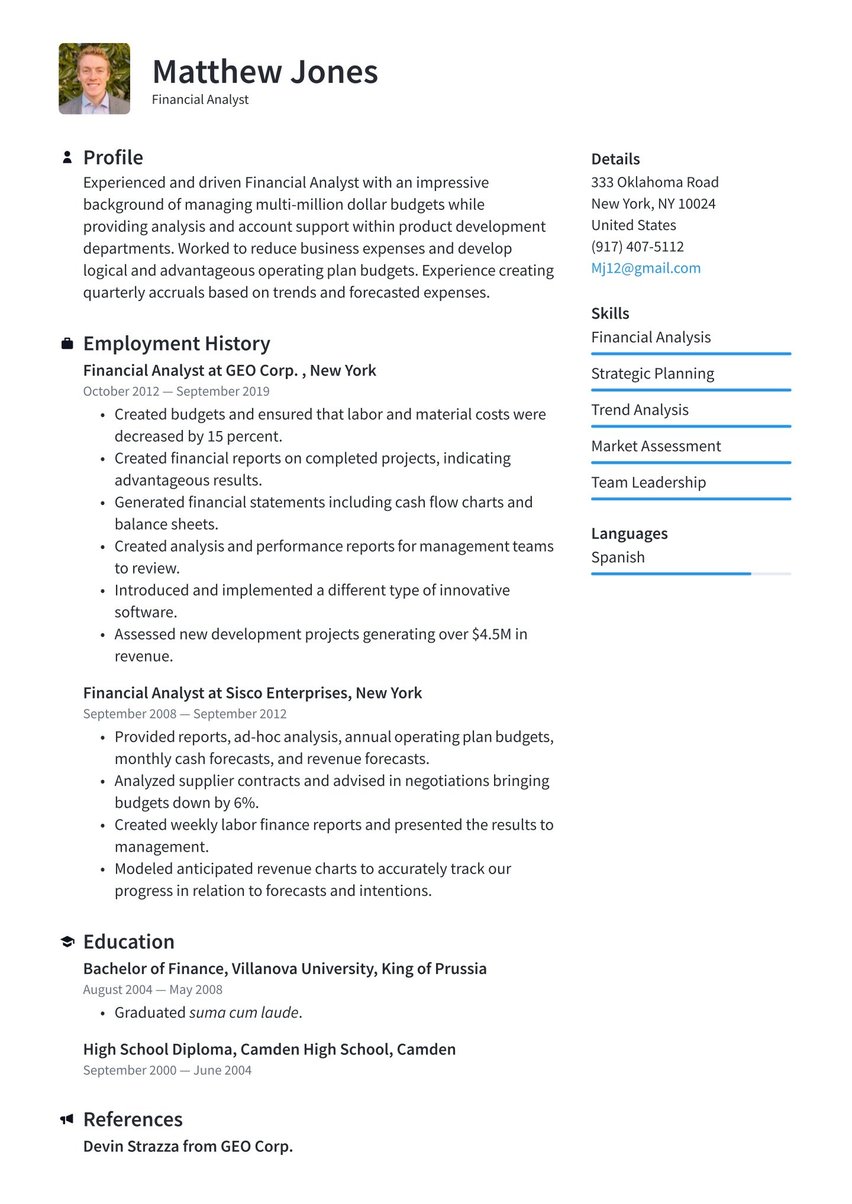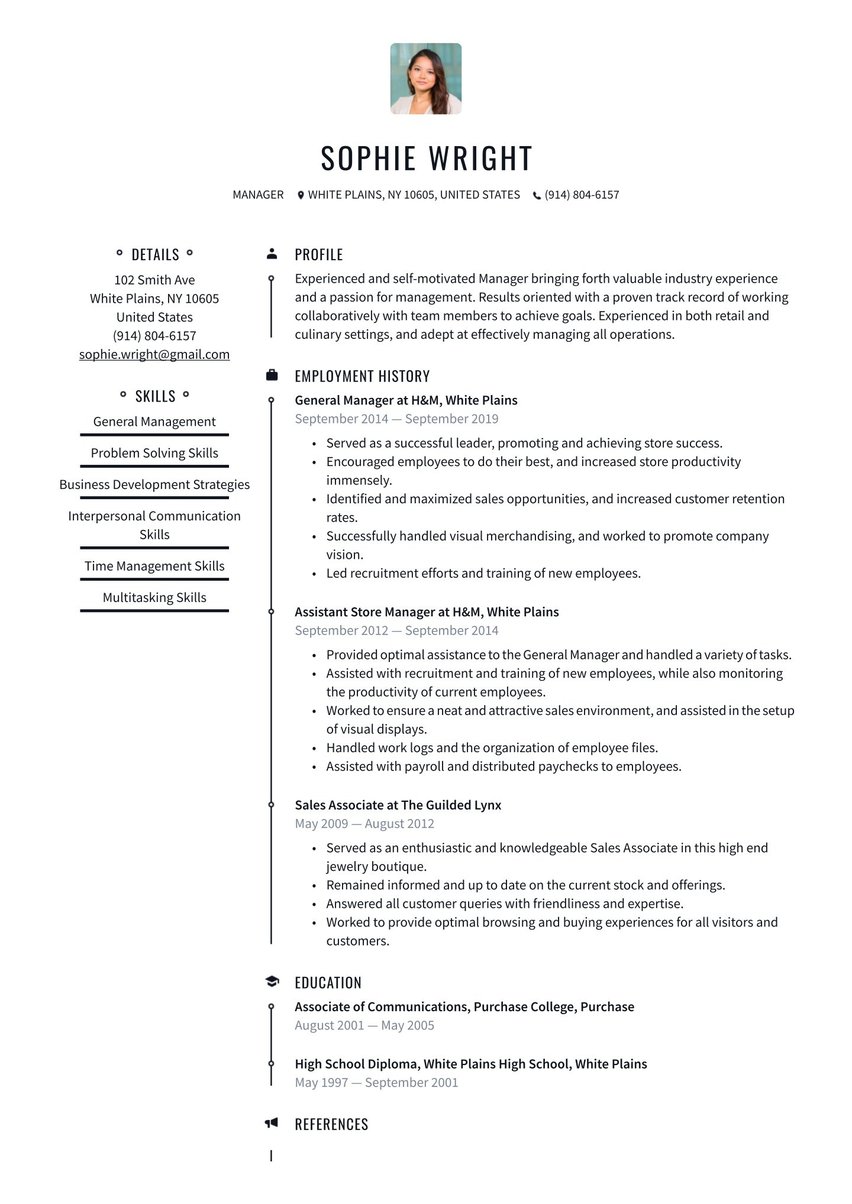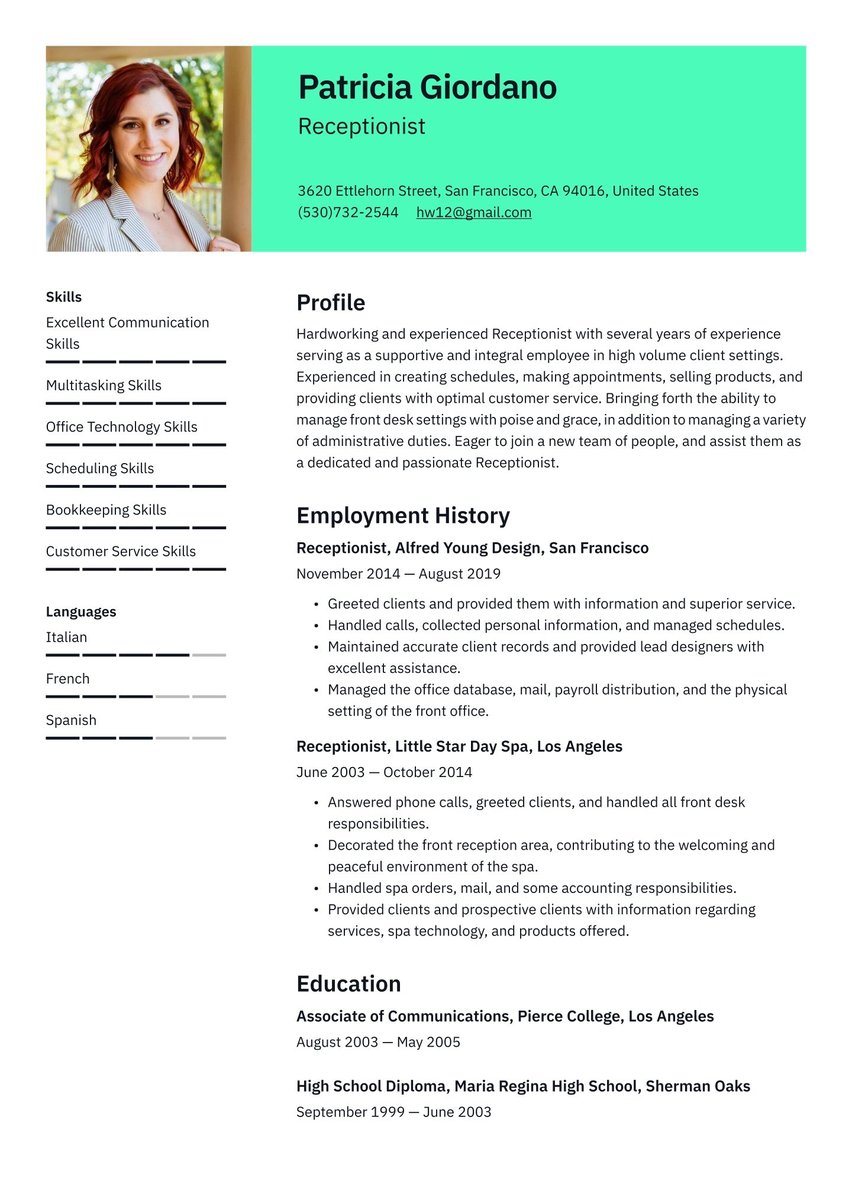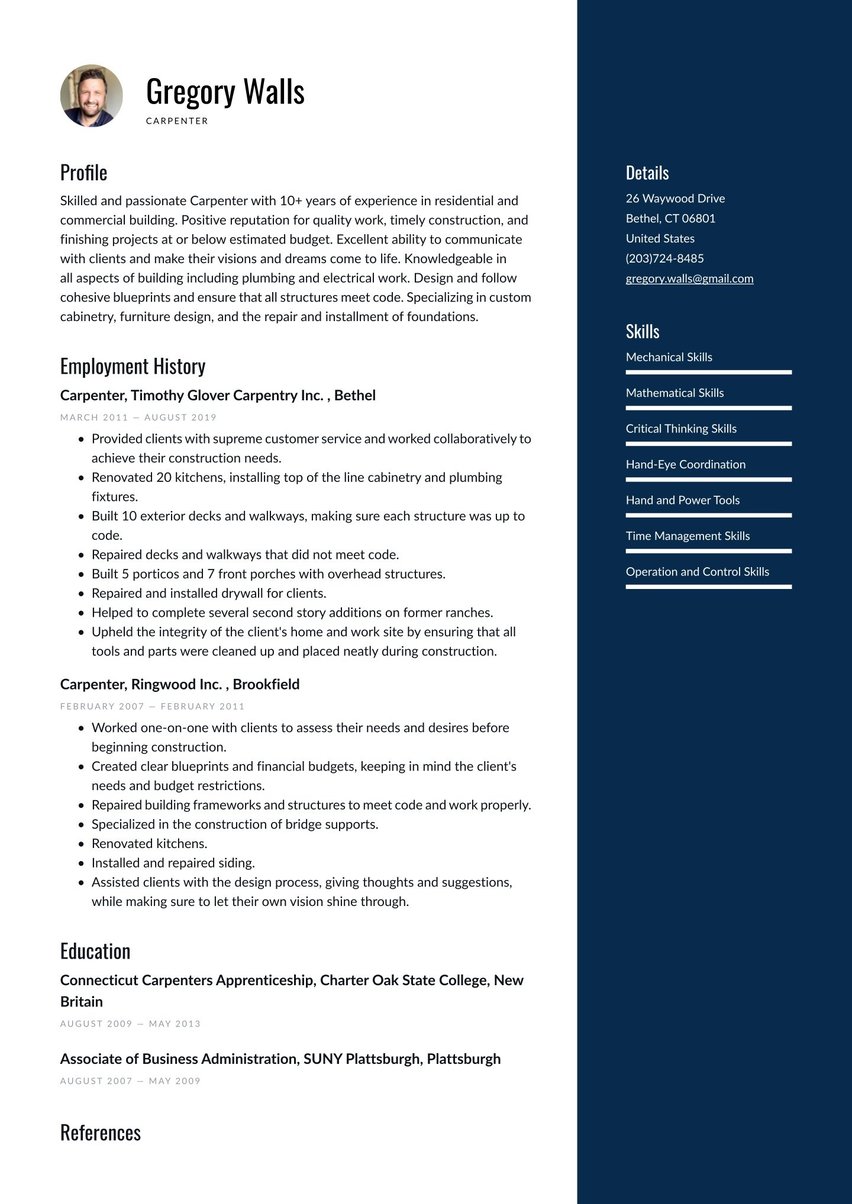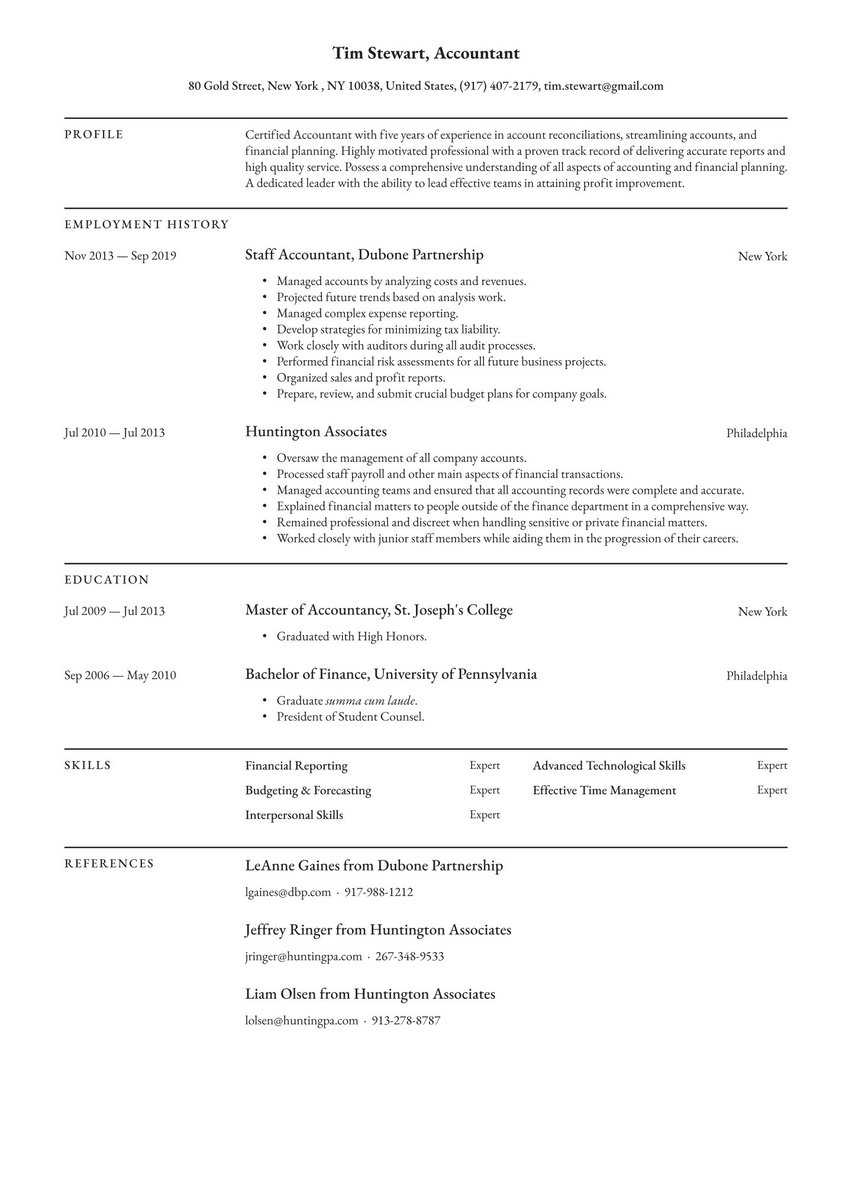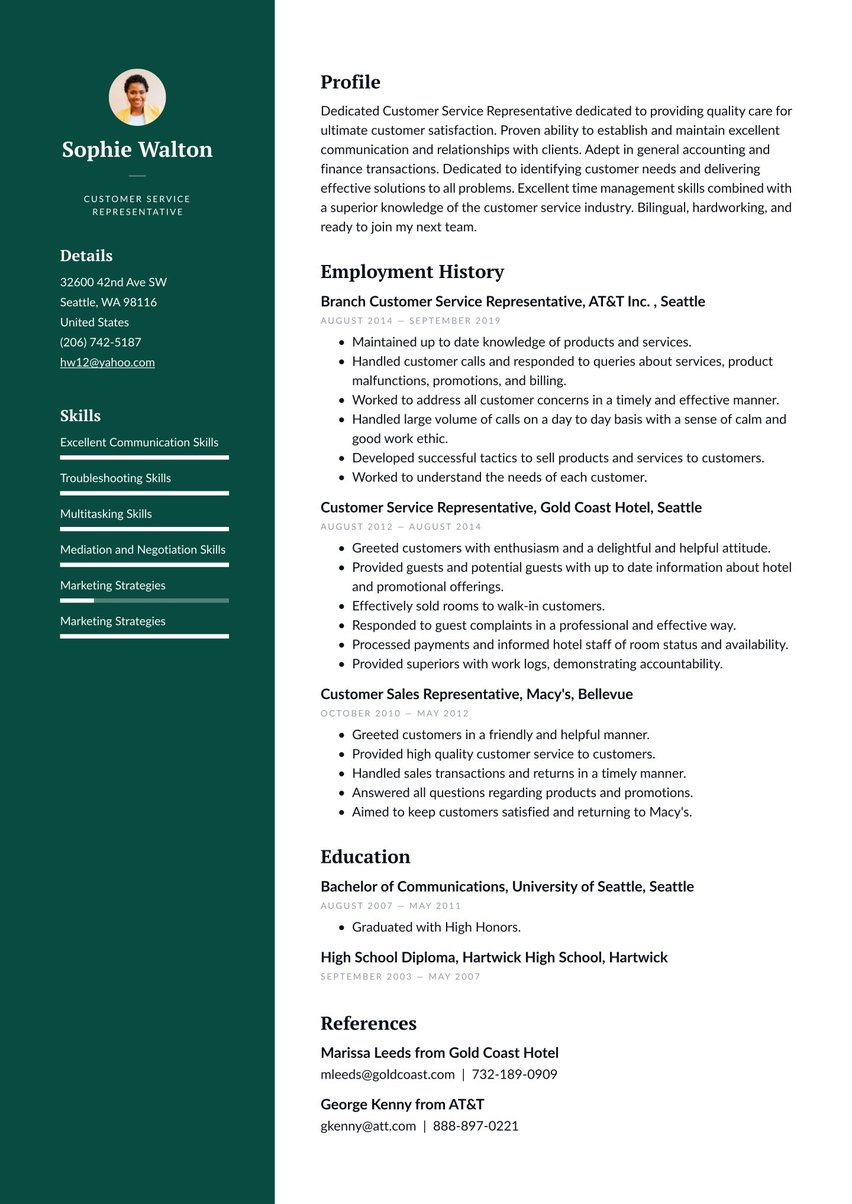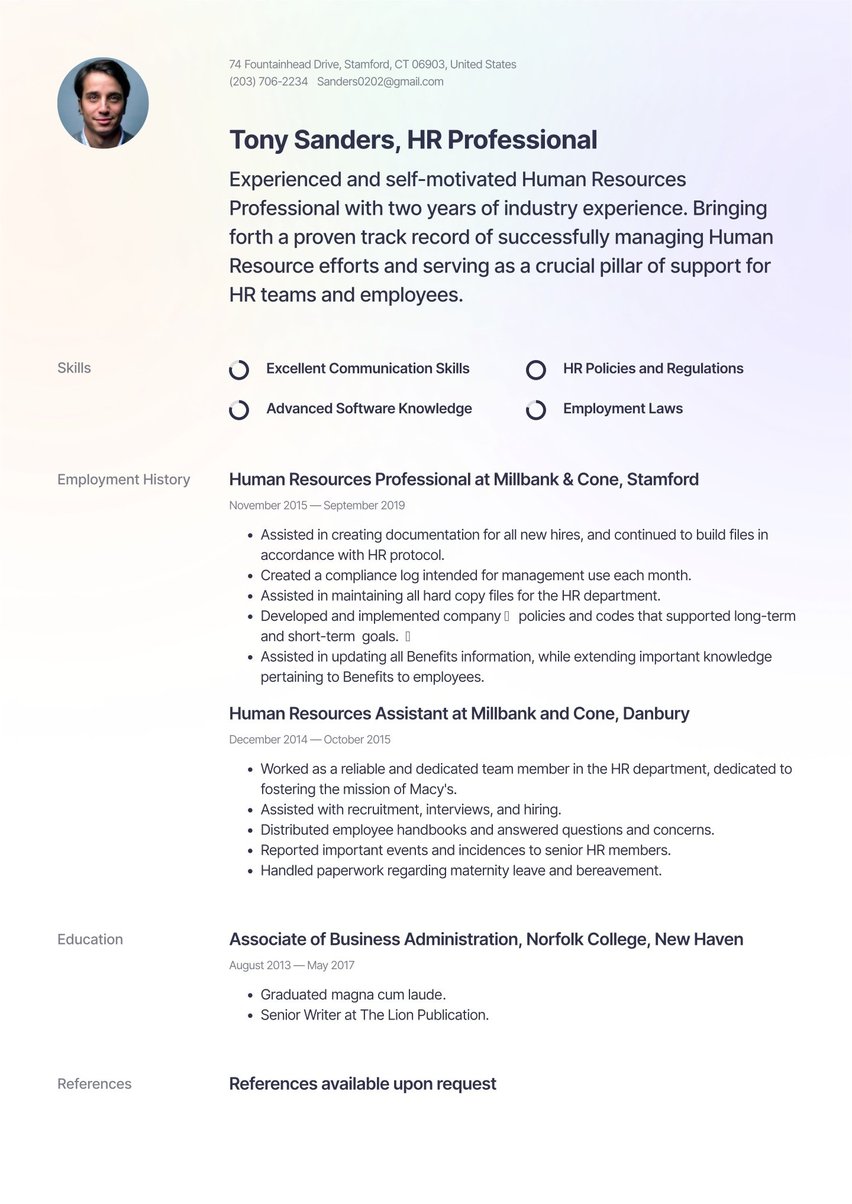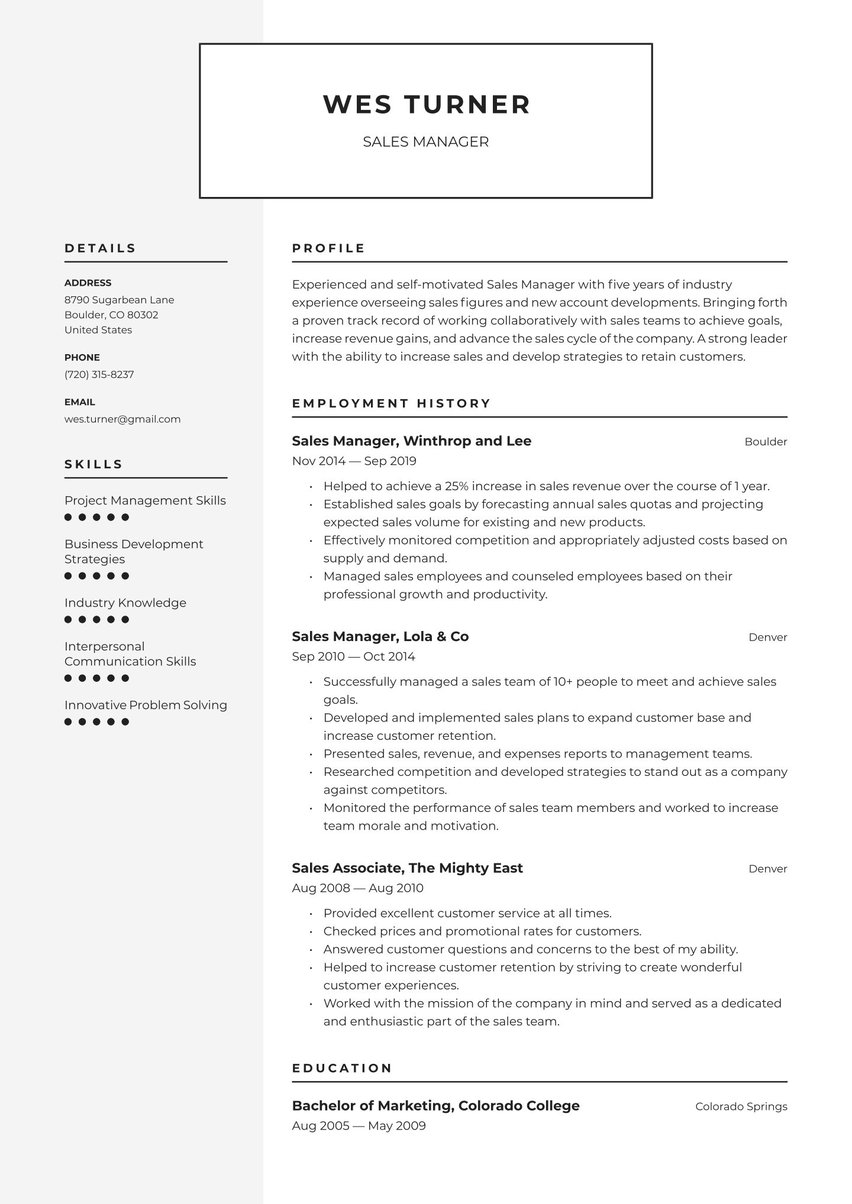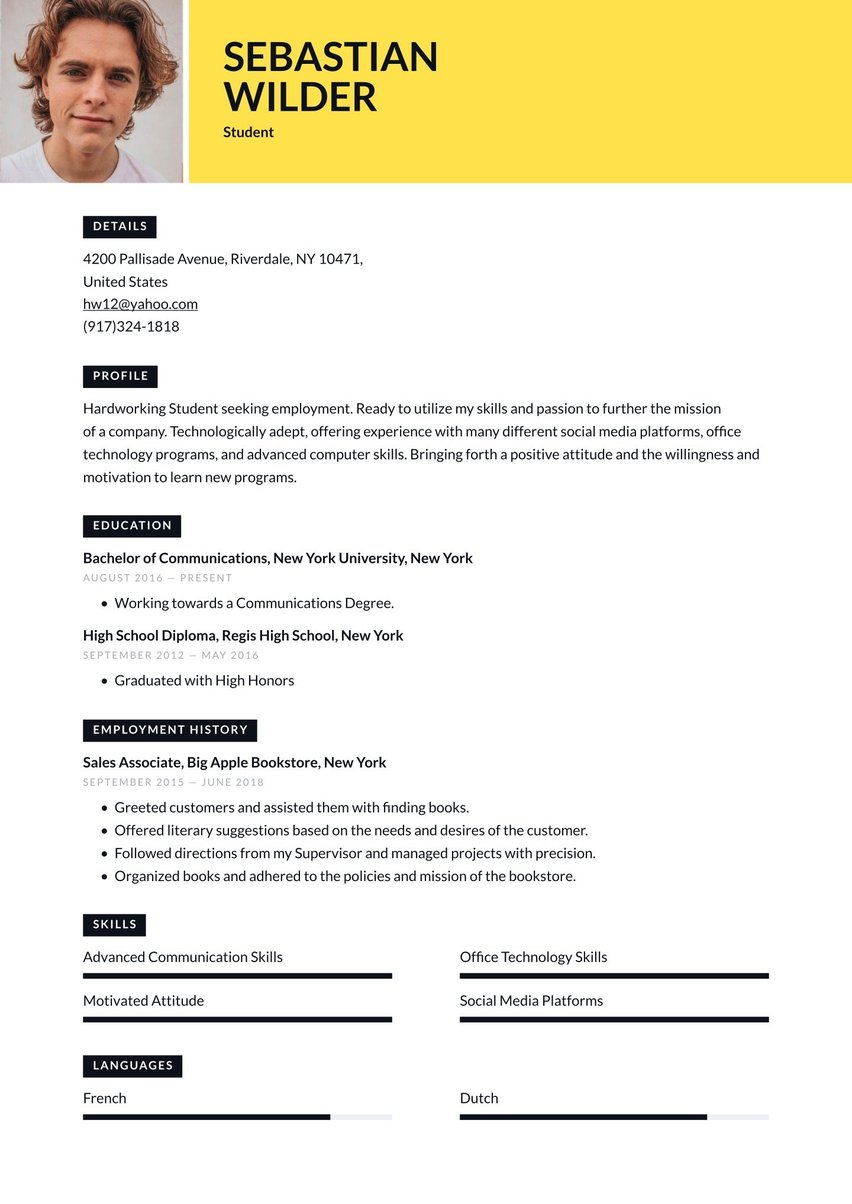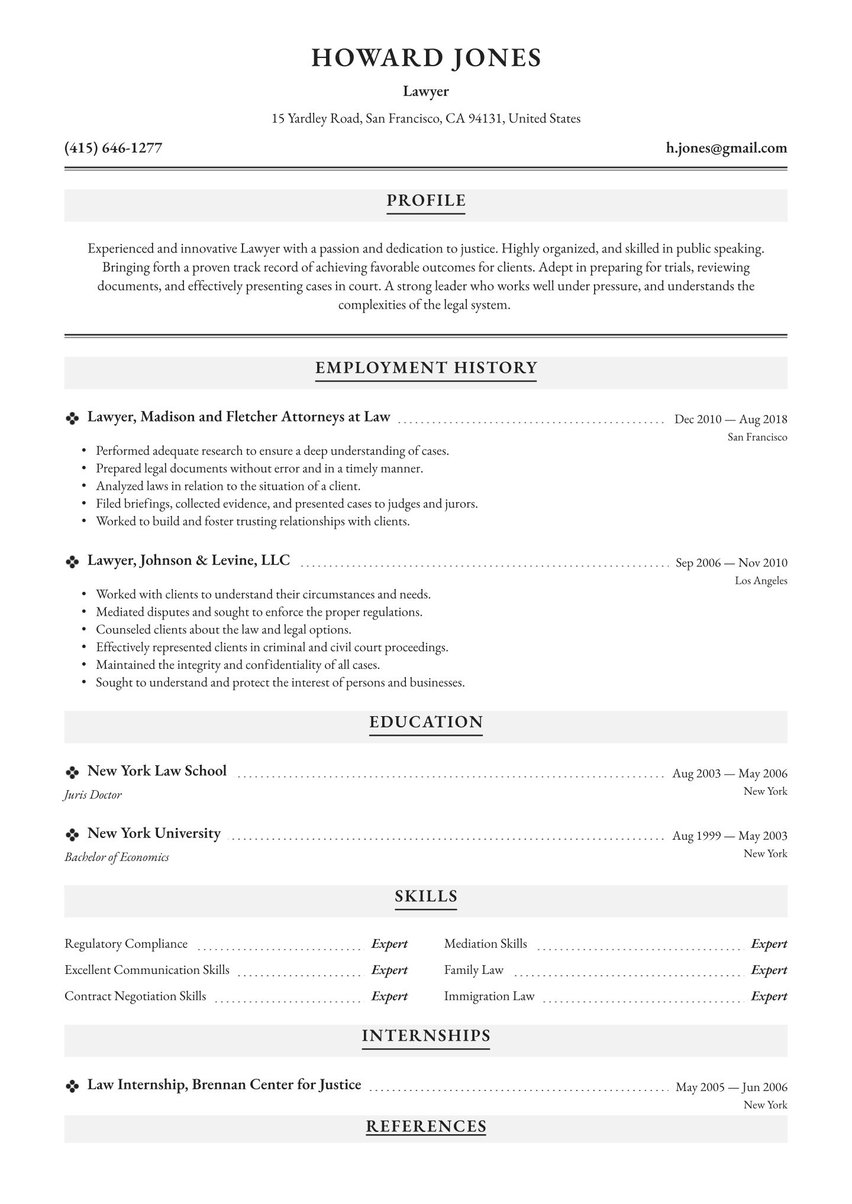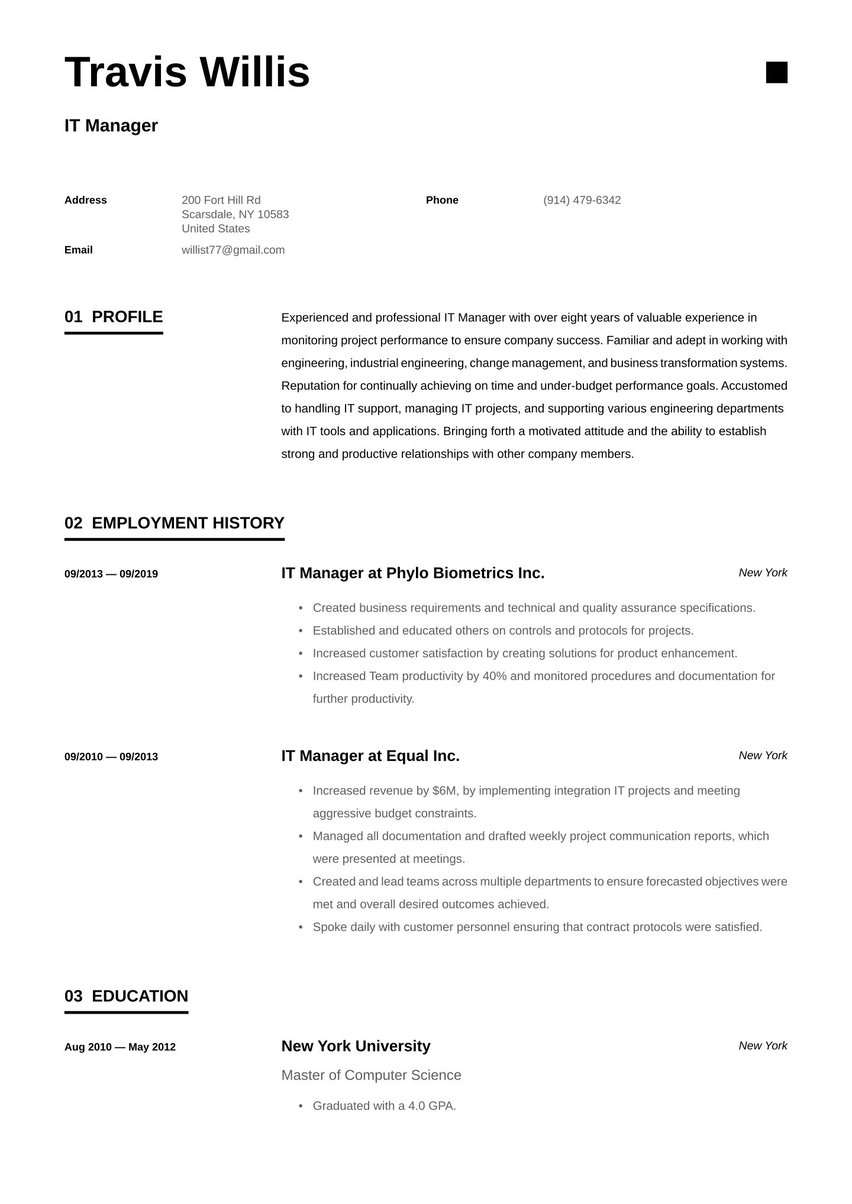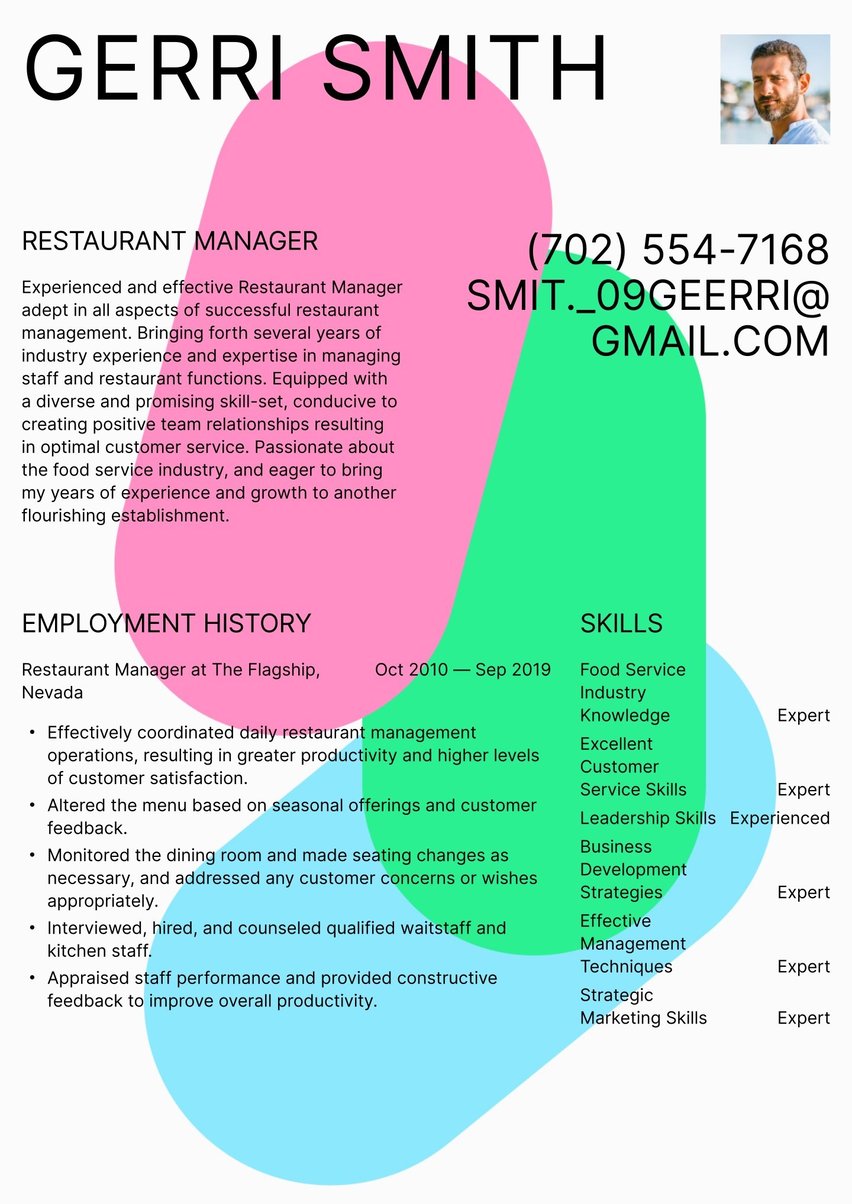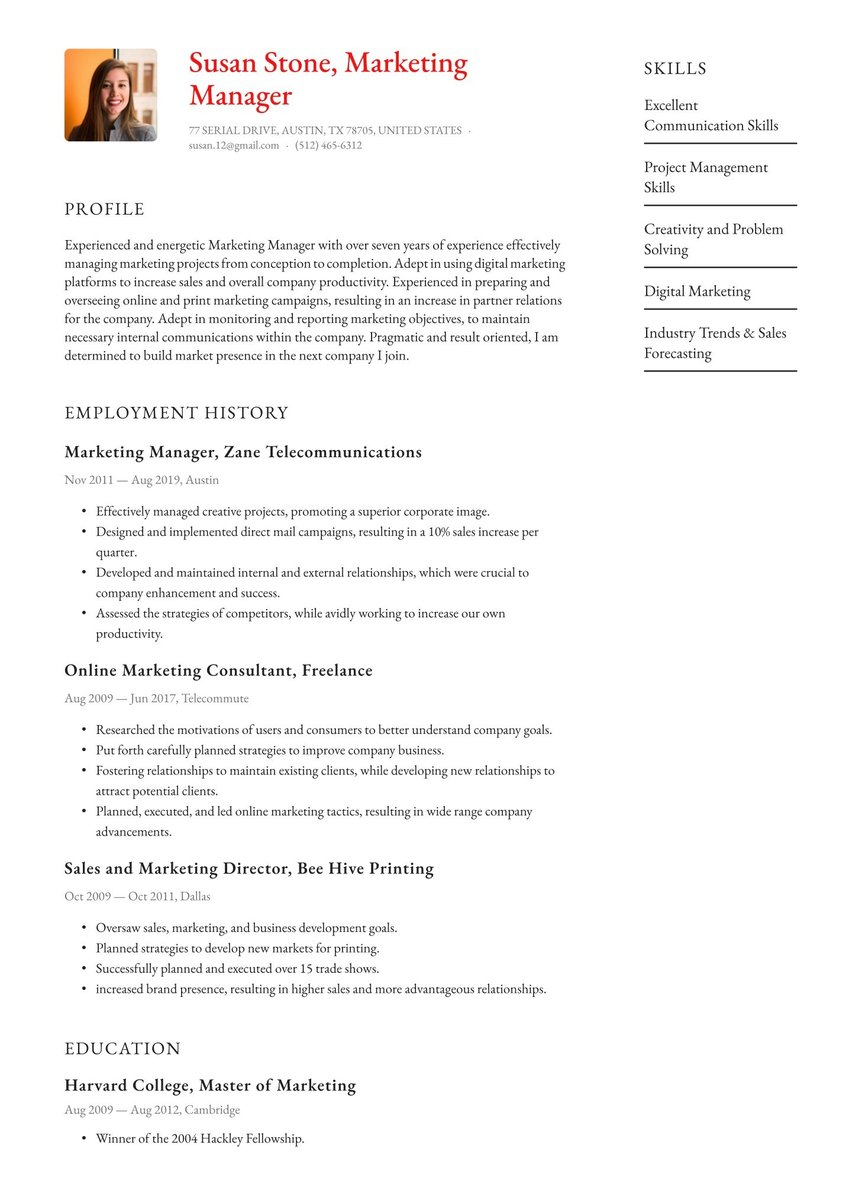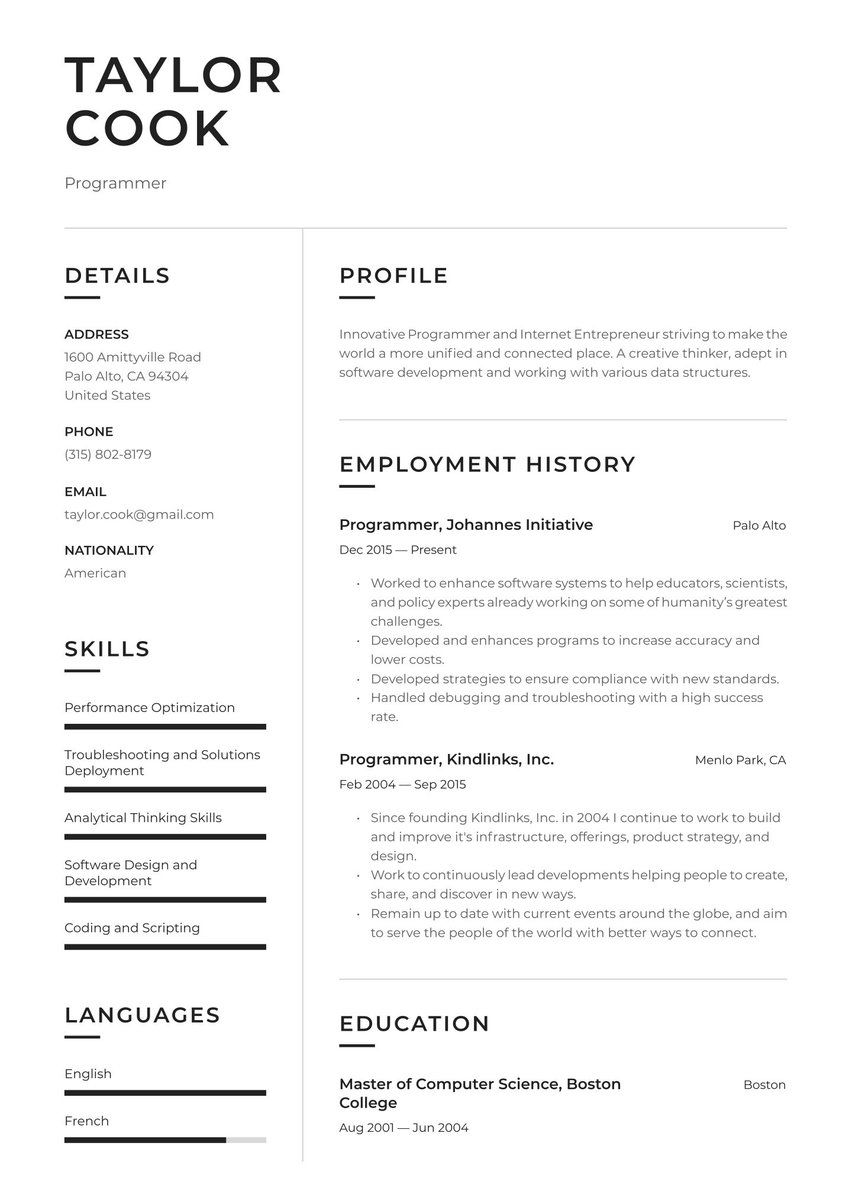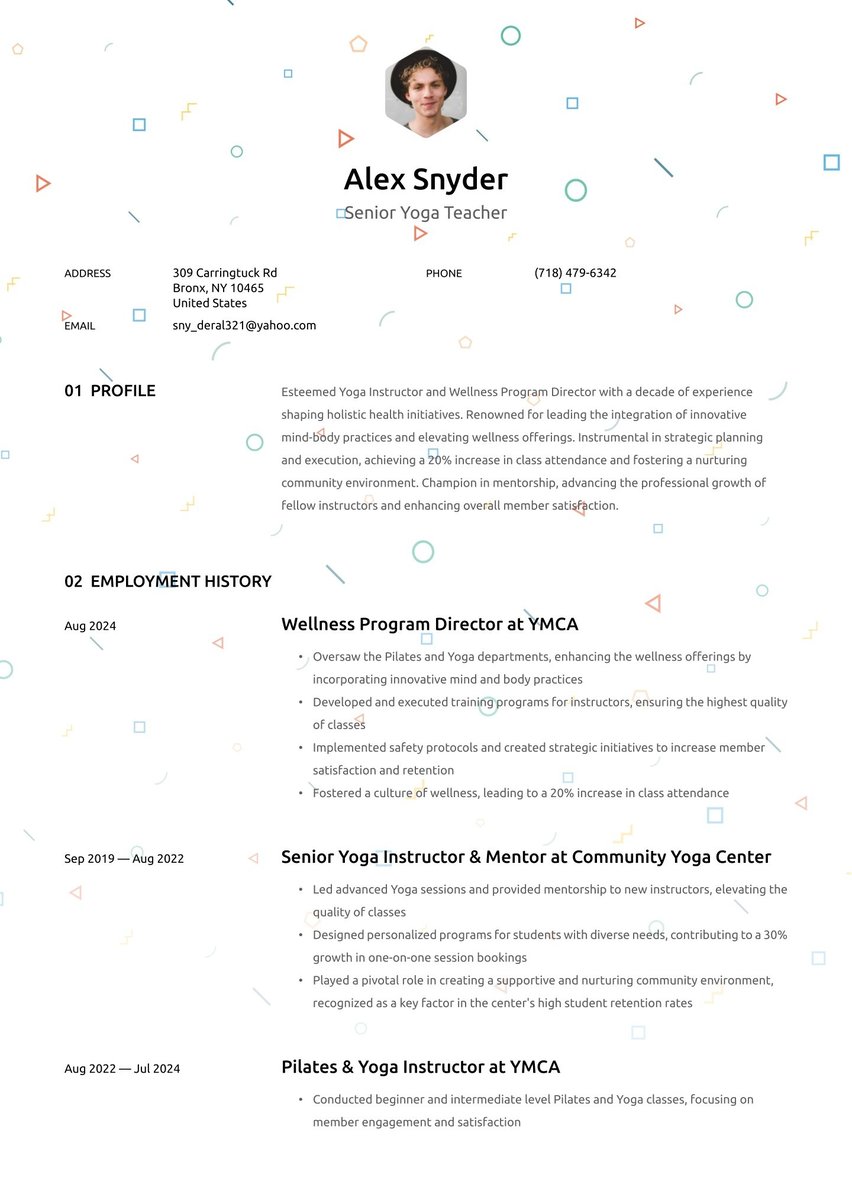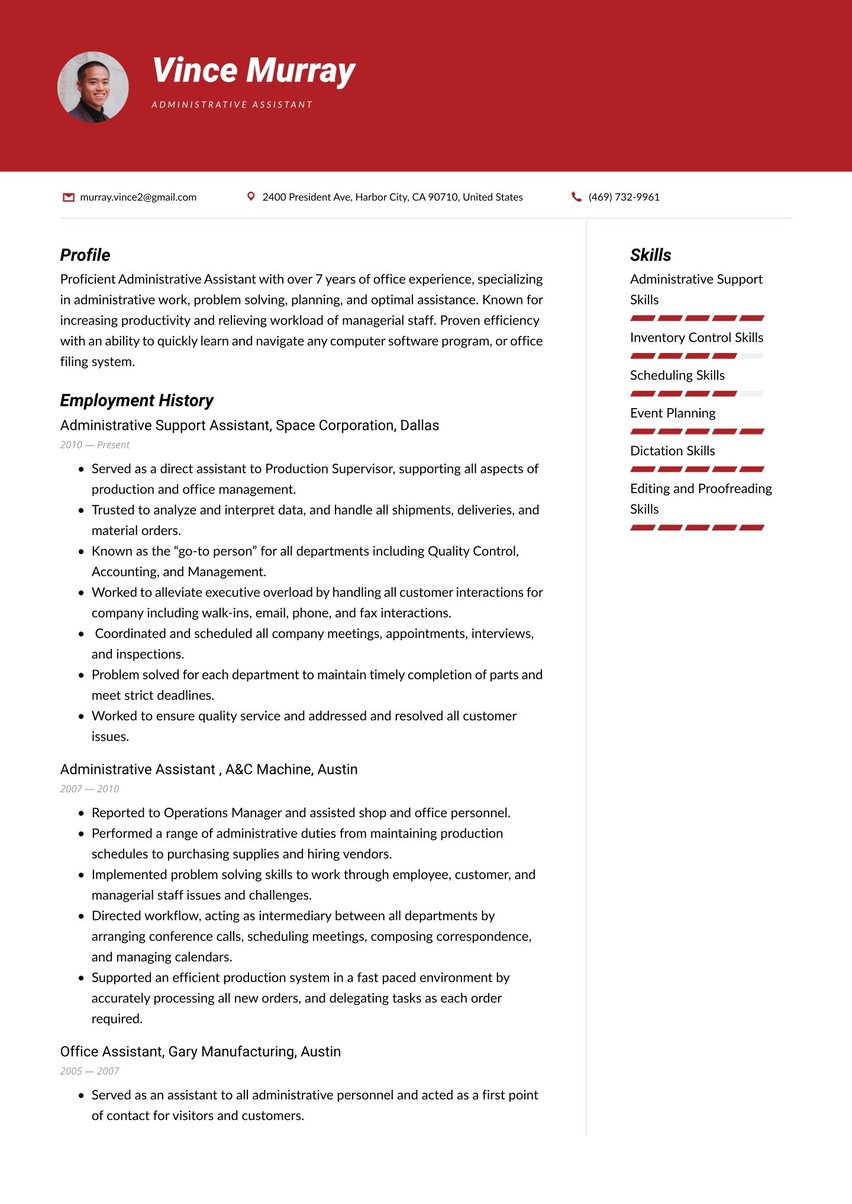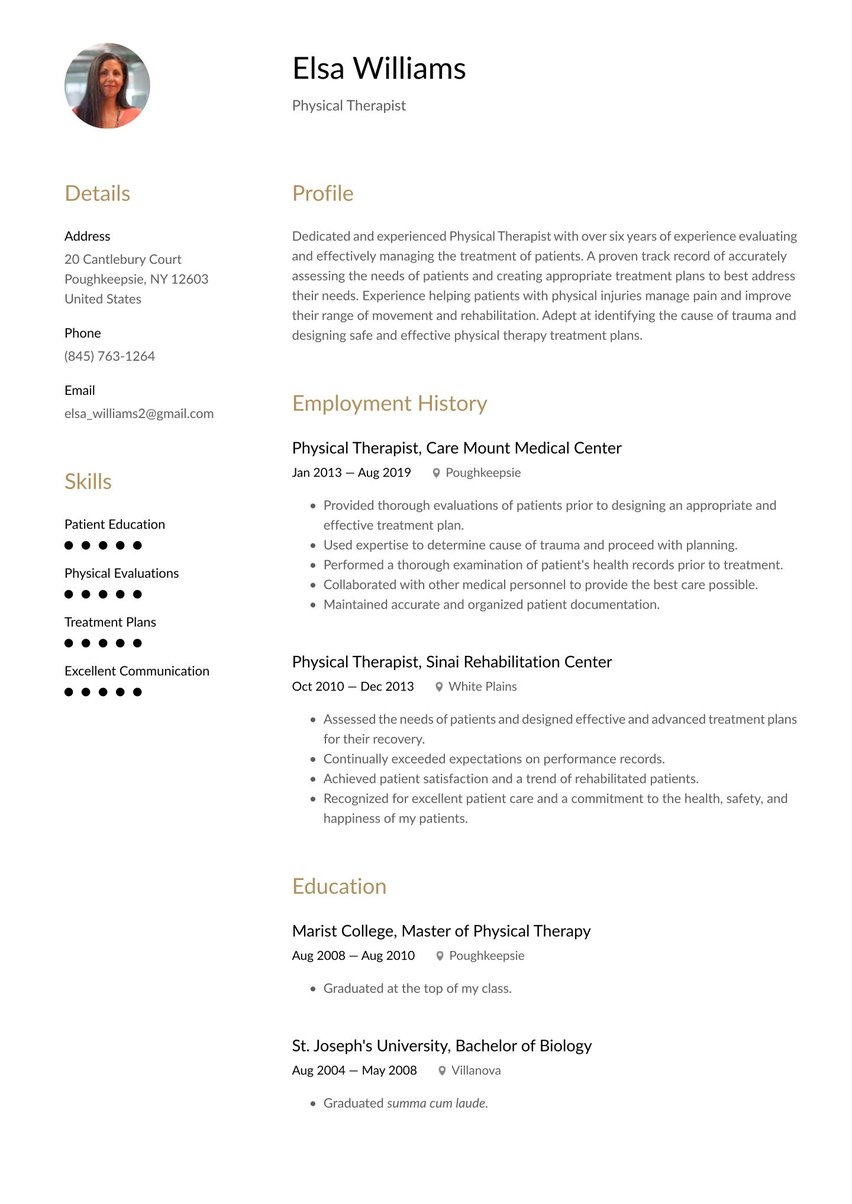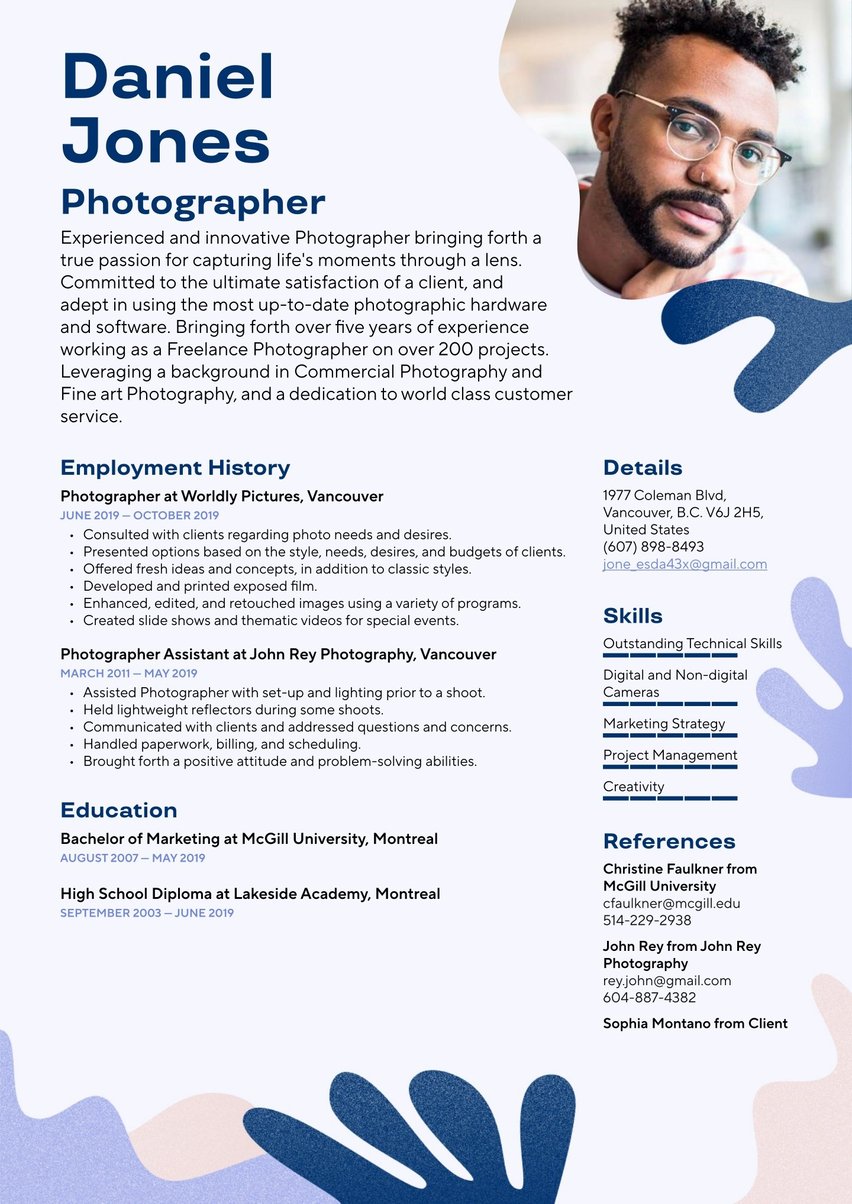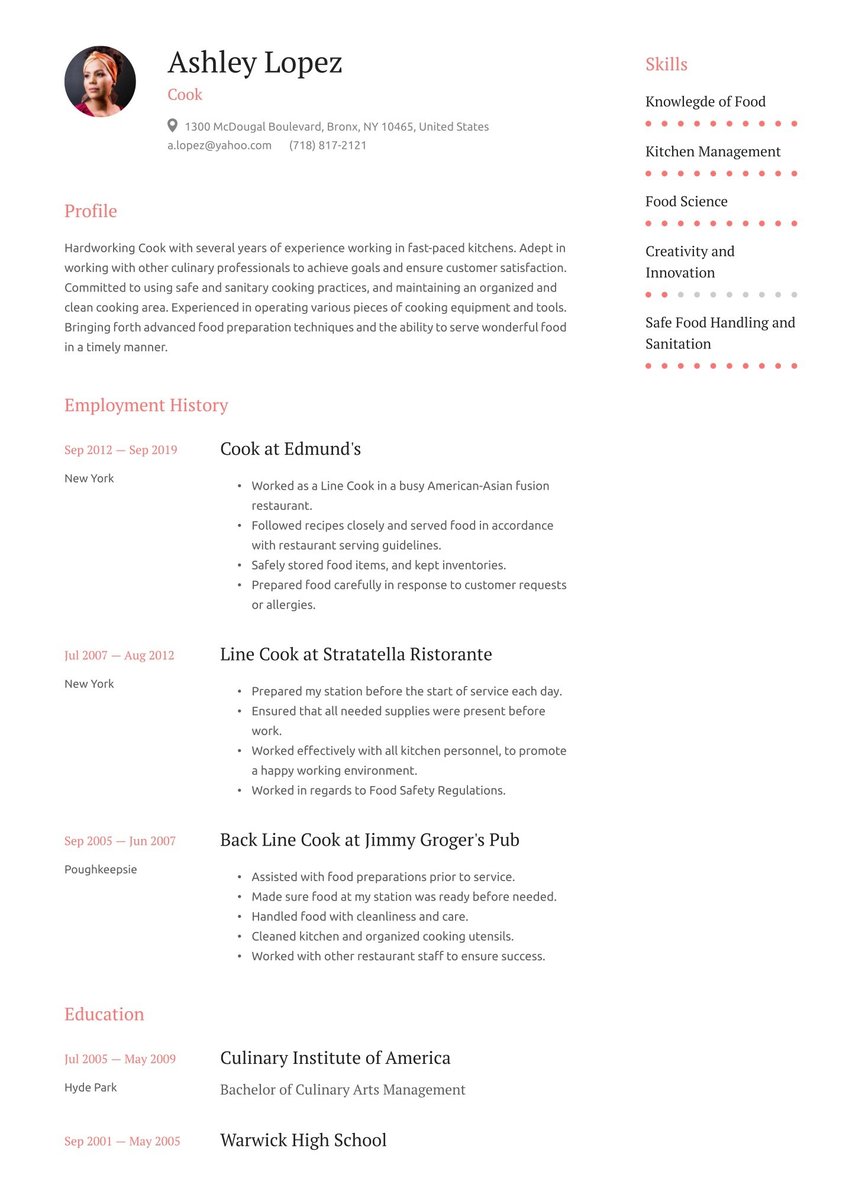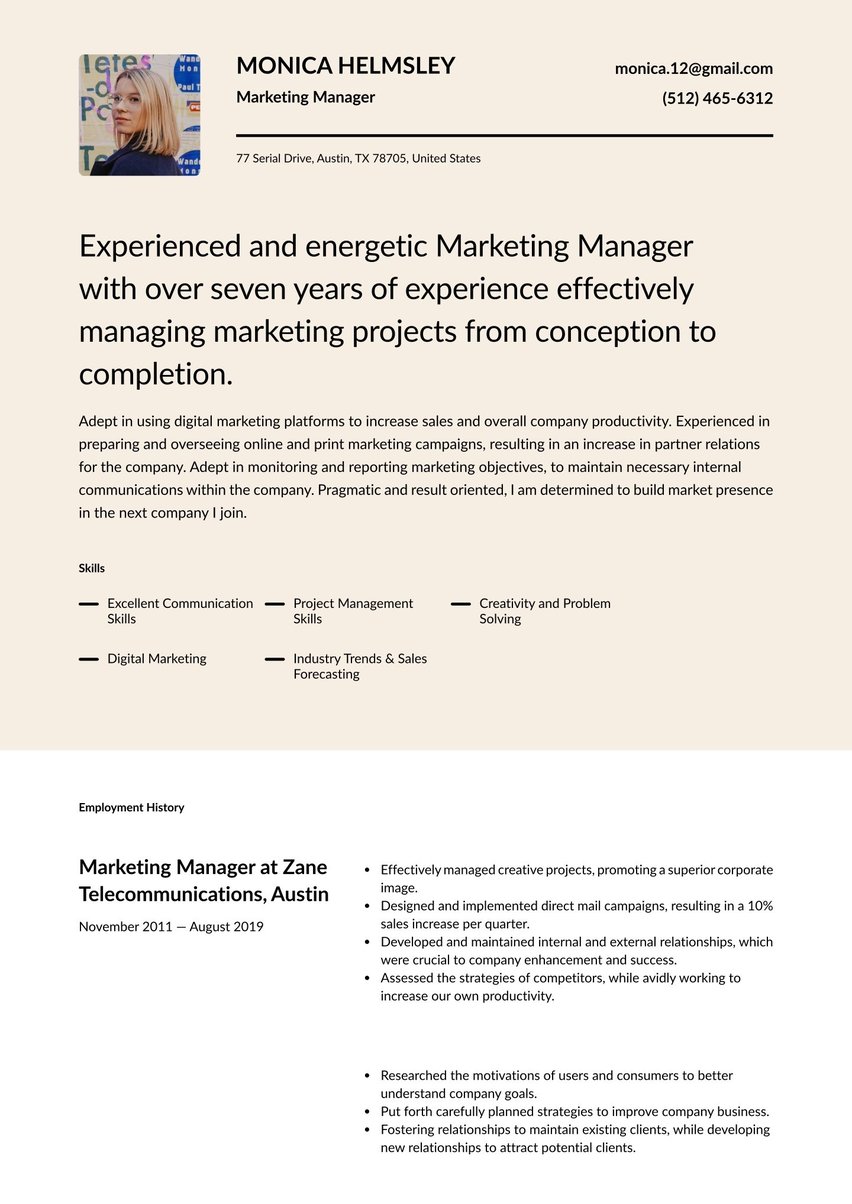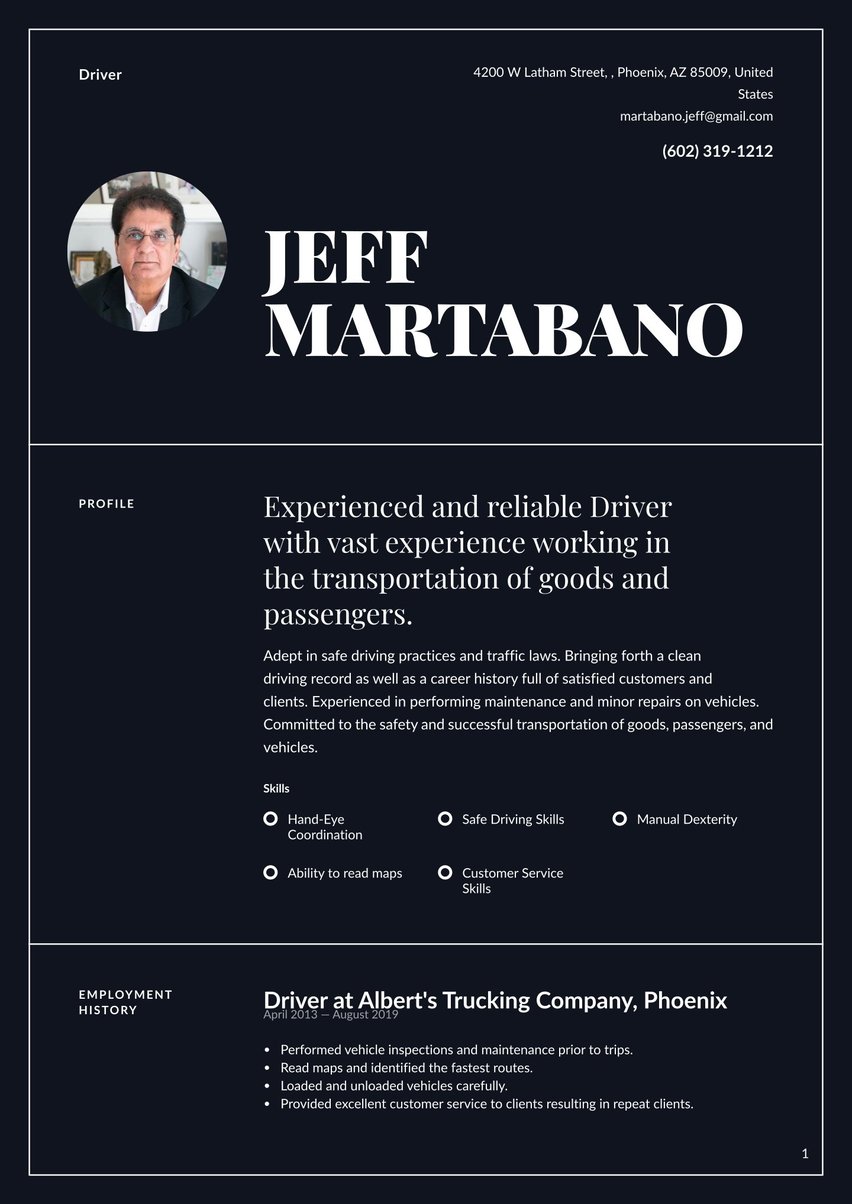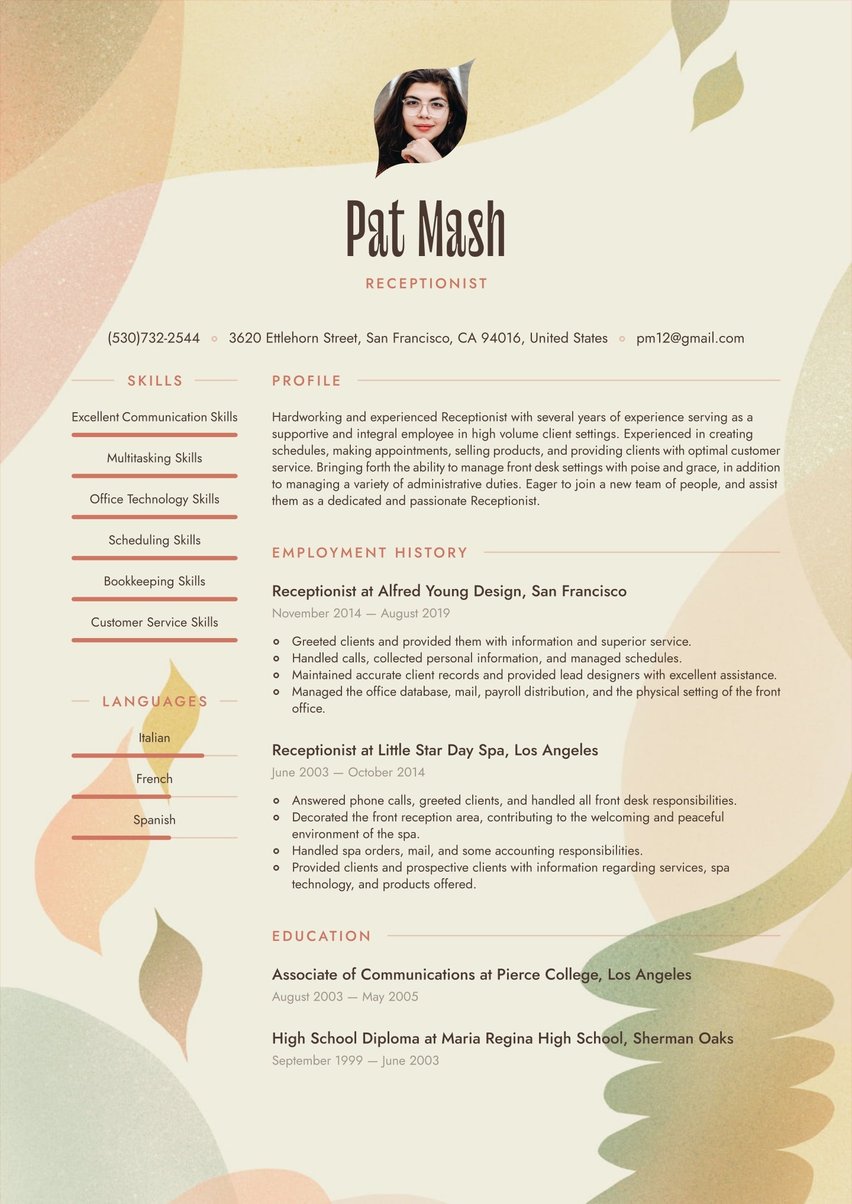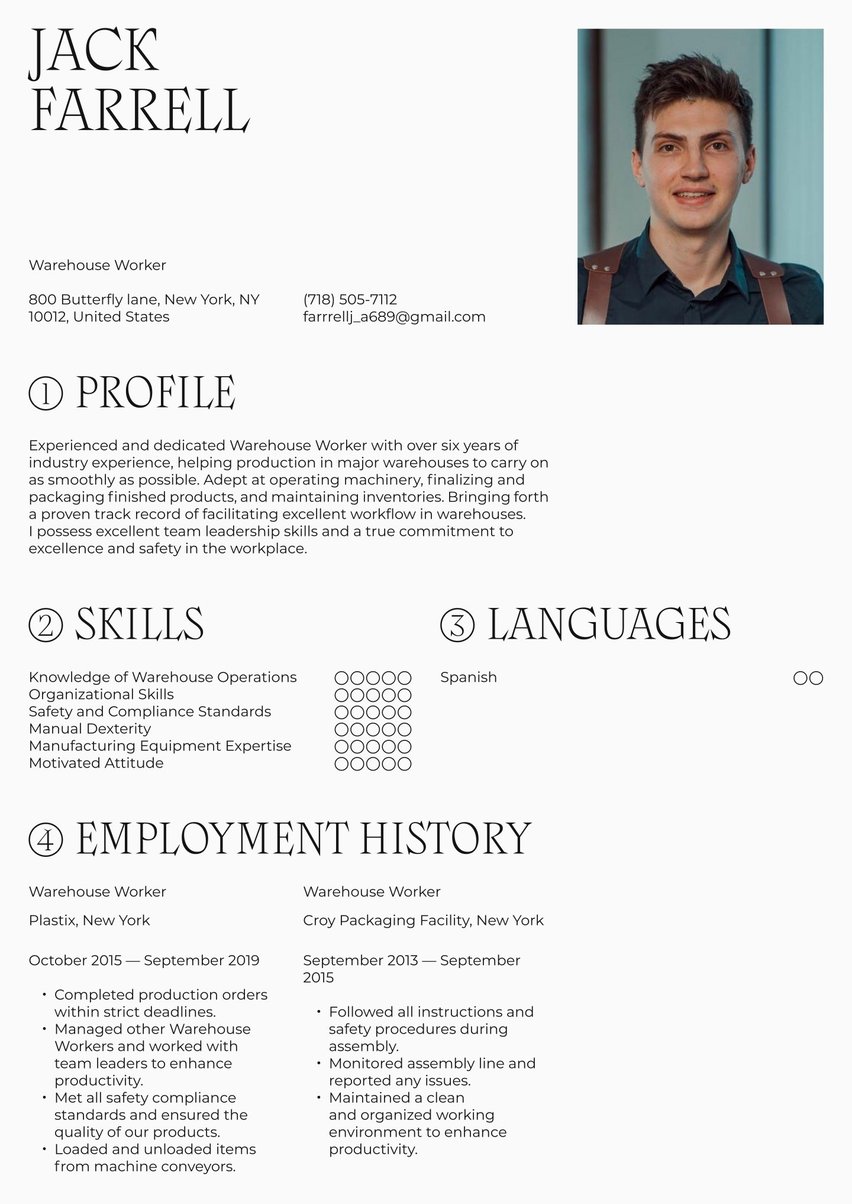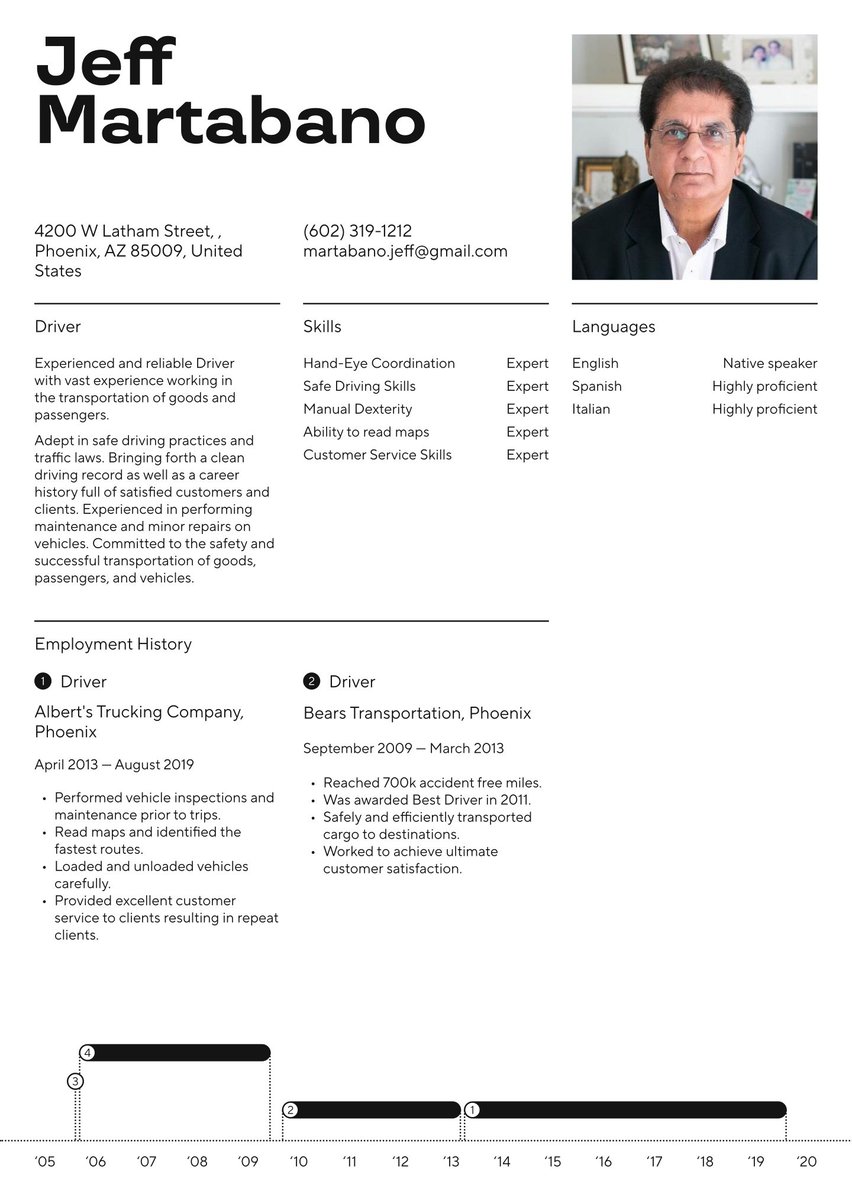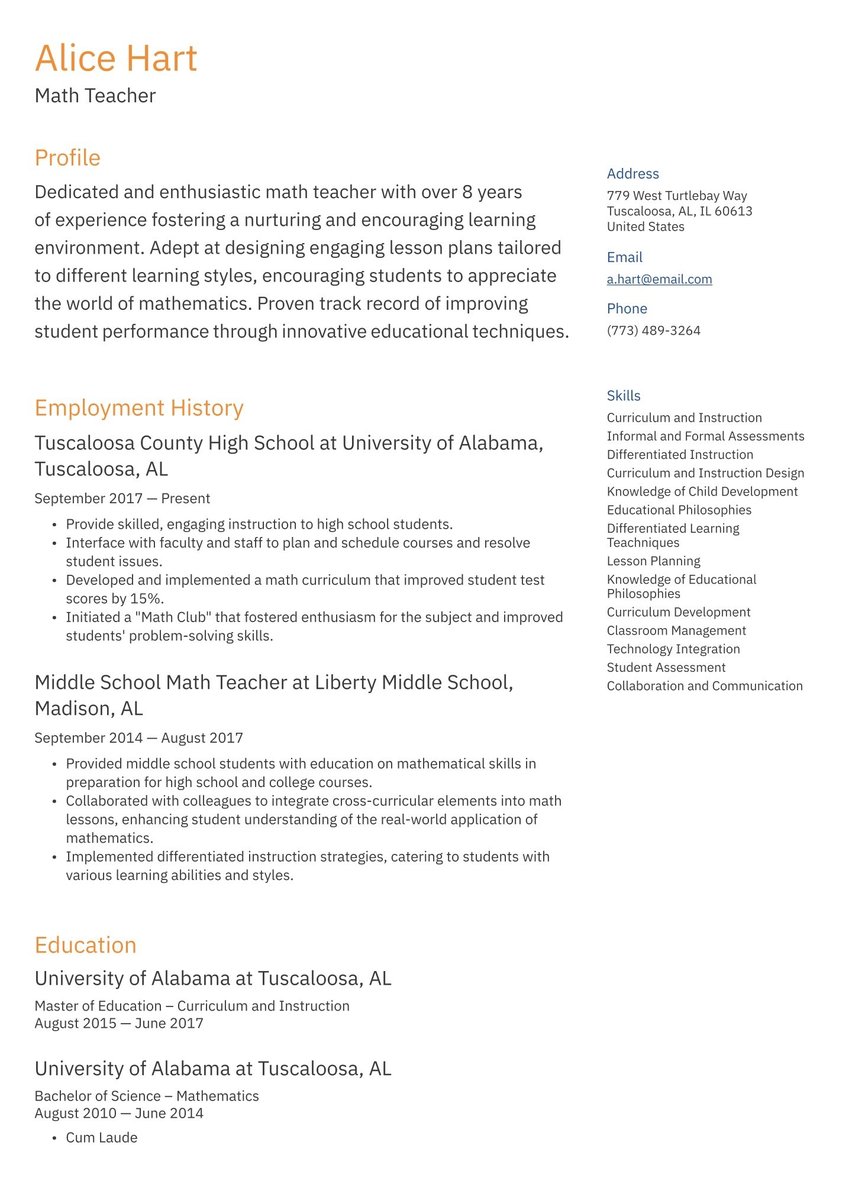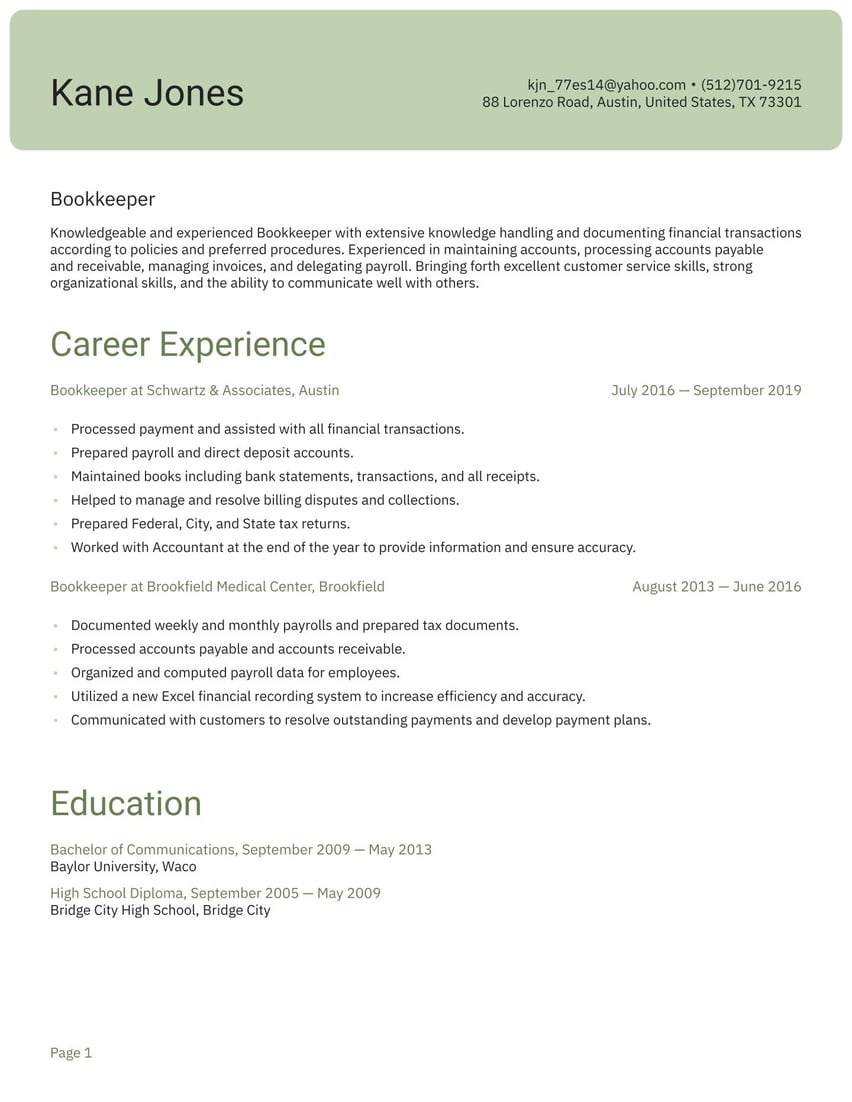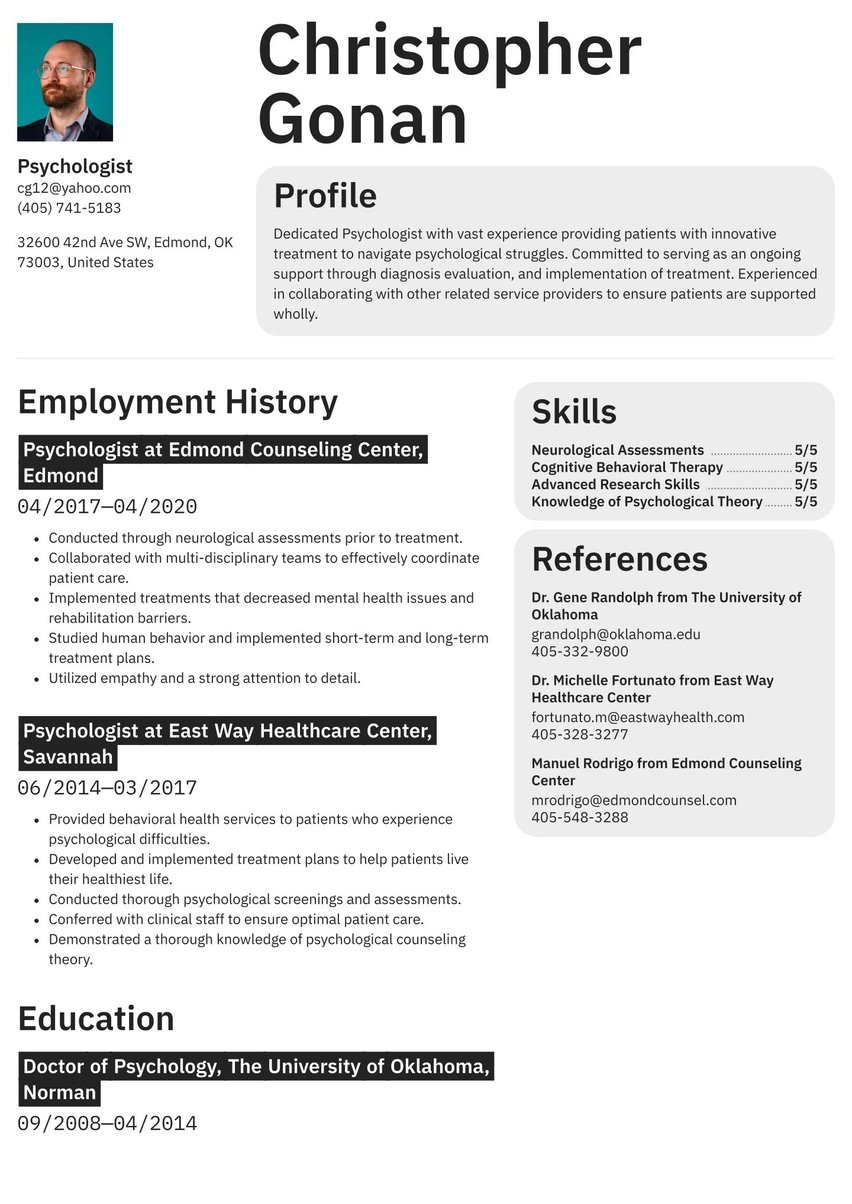You have an eye for design. Skills for making any interior space shine. Now you’ve begun to think about improvements to your own work environment. Time to boost your job hunt with an interior decorator resume that gets you that coveted interview.
Interior Decorator resume examples by experience level
The best resumes showcase your skills and talents, just as a great decorator highlights the personality of the homeowners or business when furnishing a space. Resume.io offers a full range of job hunting assistance including resume examples, resume templates, and this guide. Read on to discover:
- What does an interior decorator do?
- The structure for an interior decorator resume plus tips and tricks
- The best format for an interior decorator resume
- Tips for your summary, employment history, education, and skills sections
- Professional layout and design hints.
What does an interior decorator do?
Interior decorators may work with private clients or design firms. They examine spaces and discuss likes and dislikes, budget, and sense of style with clients. Then, they offer proposals for furnishings, color schemes, and styles, often using 3D modeling software.
Many interior decorators are self-employed and enjoy flexible schedules. They may specialize in one type of space, such as stores, offices, or apartments or even a specific room in a home, such as kitchen designer.
Even if you work for yourself, it is to your benefit to have a resume and portfolio you can show to prospective clients (this is especially relevant with high-end demanding customers).
Interior decorator job market and outlook
Anecdotal evidence suggests that interior decorators have benefited from both the move to remote work and the cocooning that people did during the pandemic lockdowns. That’s the good news for job hunters in this profession.
More good news is that all you need to be an interior decorator is an eye for design – there are no certifications or educational requirements, although a bachelor’s degree may be preferred. Plus, the average annual salary is $46,581, according to Simply Hired, with those at the top of the profession earning at least $77,000 a year. That’s a good paycheck for minimal education requirements.
The bad news is that the U.S. Bureau of Labor Statistics doesn’t see it that way. In fact, it predicts only 1 percent growth in the demand for interior decorators in the coming decade. Couple that with the supply chain crunches that have caused material shortages, and you are really going to have to have a fabulous resume and portfolio to give your career a boost.
How to write an interior decorator resume
Your interior decorator resume should contain standard elements to make it easy for recruiters and prospective clients to find the information they seek quickly and easily.
Your CV needs the following sections:
- The resume header
- The resume summary (aka profile or personal statement)
- The employment history section
- The resume skills section
- The education section
While your sections should maintain standard titles, the content of your resume needs to be personalized for each job application. Make sure you are speaking directly to your prospective client by highlighting the design skills they seek. If you choose an online resume builder such as the one resume.io furnishes, you can link directly to your portfolio to show off your previous projects.
Choosing the best resume format for an interior decorator
In general, we recommend the reverse chronological order resume format because it tells hiring managers what you have done lately. If you are a self-employed interior decorator, you may choose an alternative format that will allow you to key in on your biggest or most successful projects.
Use the projects that will most appeal to your targeted client – if you are aiming to design an office suite, there’s no need to show off your living room designs.
Resume summary example
As a design professional, you need to understand your clients, their tastes, needs, and budget. The profile section of your interior decorator resume is your best opportunity aside from your cover letter to make your personality the focal point of your job application.
In about 100-150 words (200 in some rare cases), you should highlight your most successful design project and your creative style as well as your people skills. Remember to show off your ability to work closely with architects and other building professionals to achieve client goals.
You are a design professional who draws and implements decorating plans and designs, which requires space planning and computer design programs. Describe how you work to make spaces functional, safe, and aesthetically pleasing.
Looking for more summary examples? Here are a few for you to peruse: Realtor resume sample, new home sales consultant resume sample, interior designer resume sample, real estate agent resume example, and architect resume example.
See resume example content below.
Innovative and experienced Certified Interior Decorator with several years of experience working with clients to fulfill their decorating and design goals. Bringing forth a passion for décor and an eye for achieving the ultimate “wow” factor for interior spaces. Committed to combining functionality with aesthetically pleasing décor. Adept in handling all aspects of planning and decorating from conception to completion.
Employment history resume sample
Just as you tell a story with furnishings and color, you must tell a story with the descriptions in the employment history section of your interior decorator resume. Think of each progressive job as a stepping stone in which you learned new skills and took on new challenges.
Hiring managers want to know what you will add to the firm, so show them that you are talented, have the necessary skills, and have a firm understanding of design concepts. Then, using reverse chronological order, tell the tale of your career by using each bullet item in your work experience section to highlight a project, what challenges you faced, the problem-solving skills you used, and the results.
If you have data, such as money you saved clients with your creative solutions or customer service satisfaction surveys, make sure you include that here. Detailed examples are always better than vague descriptions.
Consider that your role as an interior designer is physically demanding and typically requires lifting and standing for long periods of time. You may want to include an item here that shows you are up to the job. If you have expertise in specific aspects of interior design such as decorative items, furniture, colors, lighting fixtures, or flooring, make that obvious. Use strong action verbs and detailed descriptions that give a clear image of who you are as an employee and a decorator.
See resume example content below.
Interior Decorator at Jan's Designs, Burbank
July 2011 - Present
- Worked with clients to understand needs and desires related to interior decoration.
- Formulated design plans that were functional and aesthetically pleasing.
- Achieved budget goals and kept careful documentation of plans and orders.
- Presented clients with a variety of options for color schemes, lighting design, decorative accessories, furniture placement and more.
- Managed all client billing and accounts.
- Presented clients with unique pieces to achieve their ultimate decorating goals.
Assistant Designer at Henfield Designs, Burbank
August 2008 - June 2011
- Assisted the lead designer with day-to-day tasks to ensure organization and productivity.
- Greeted clients and handled correspondence between the designer and clients.
- Maintained records and documentation of orders.
- Handled administrative and clerical tasks, in addition to billing.
Interior decorator CV skills example
What’s the point of the skills section of your interior decorator resume? Think of it as akin to the accent piece that pops when you design a room. The attributes you choose to focus on here says a lot about your style and abilities.
Of course, as a decorator you need design skills, but you need a host of interpersonal skills as well as knowledge of building codes and restrictions.
You need
- excellent listening to understand what your client wants and can afford
- customer service skills – clients can get emotional when their home is being remodeled
- knowledge of design software
- creativity and attention to detail
- critical thinking and problem-solving – how can you expand the kitchen without breaking the bank?
- knowledge of sustainability and eco-friendly materials.
Check the job listing if you are applying to work for someone else and make sure you include the skills mentioned within it to ensure that your prospective employer knows you have what it takes.
See resume sample content below.
- Advanced Decorating and Design Skills
- Residential Decorating
- Commercial Decorating
- AutoCAD
- Hand Drafting
- Project Management
- Budgeting
Resume education example
This section of your interior decorator resume is a listing of your academic credentials. An ideal candidate holds a bachelor’s degree in interior design or a related field. List all your degrees and certifications in your education section.
Only three states — Florida, Louisiana, and Nevada plus Washington, D.C. — require interior designers to be registered, but an interior decorator certificate is a valuable resume asset. The most common certification is earned by taking an exam from the Council for Interior Design Qualification, although California residents must take a different version of the exam.
Any honors or distinctions should be noted here as well. If you hold a degree higher than a bachelor’s degree, you may leave out your high school. If you have many certifications, memberships, or awards, you should consider creating a separate section highlighting them.
See interior designer resume sample content below.
Interior Decorator Certification at The Online Interior Decorating Program
August 2007
Bachelor of Communications at Hartwick College, Hartwick
August 2002 - May 2006
Resume layout and design
You’re a design professional, so your layout really has to pop. But as you know, it’s better to keep it clean and create a focal point than to create a space where eyes don’t know where to fall. The same is true for your resume. Your design is an important visual representation of your talents.
Apply the same design principles here that you do in your design projects:
- Don’t overstuff: Here’s your chance to show off your space planning ability
- Use color appropriately and sparingly
- Highlight the areas you want people (or recruiters) to notice — such as your section headings and contact information
- Create an obvious line for the eye to follow
Key takeaways for an interior decorator
- The demand for Interior decorators may be on the upswing since people are spending more time at home, however, the statistics so far don’t bear that out.
- Your summary is the best place to add personality to your interior decorator resume – and personality is a big part of your job.
- Interior decorators need much more than design skills to be successful, so highlight your attributes well.
- Design a resume template that speaks to your style, or choose one from resume.io.


.jpg)

.jpg)
